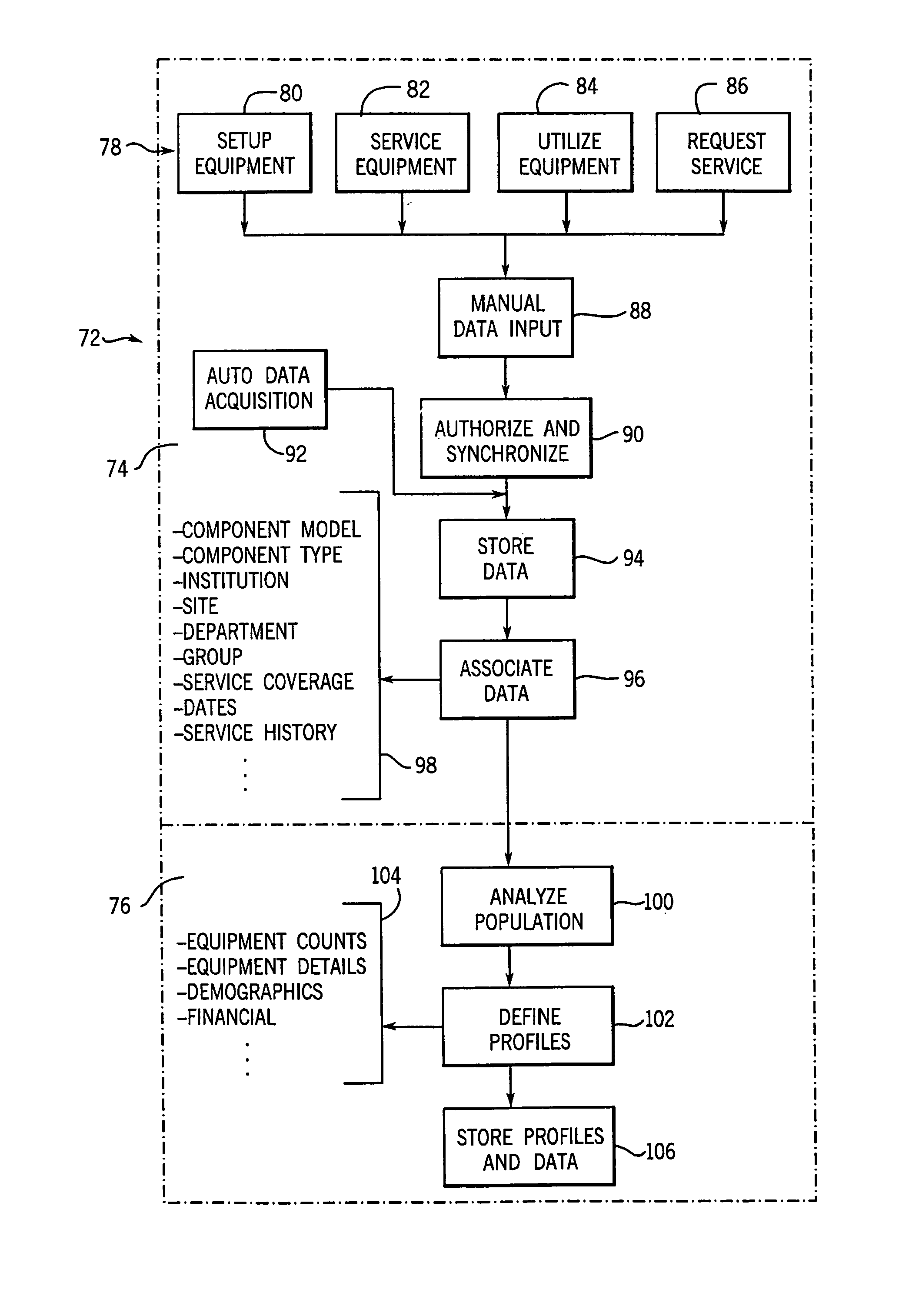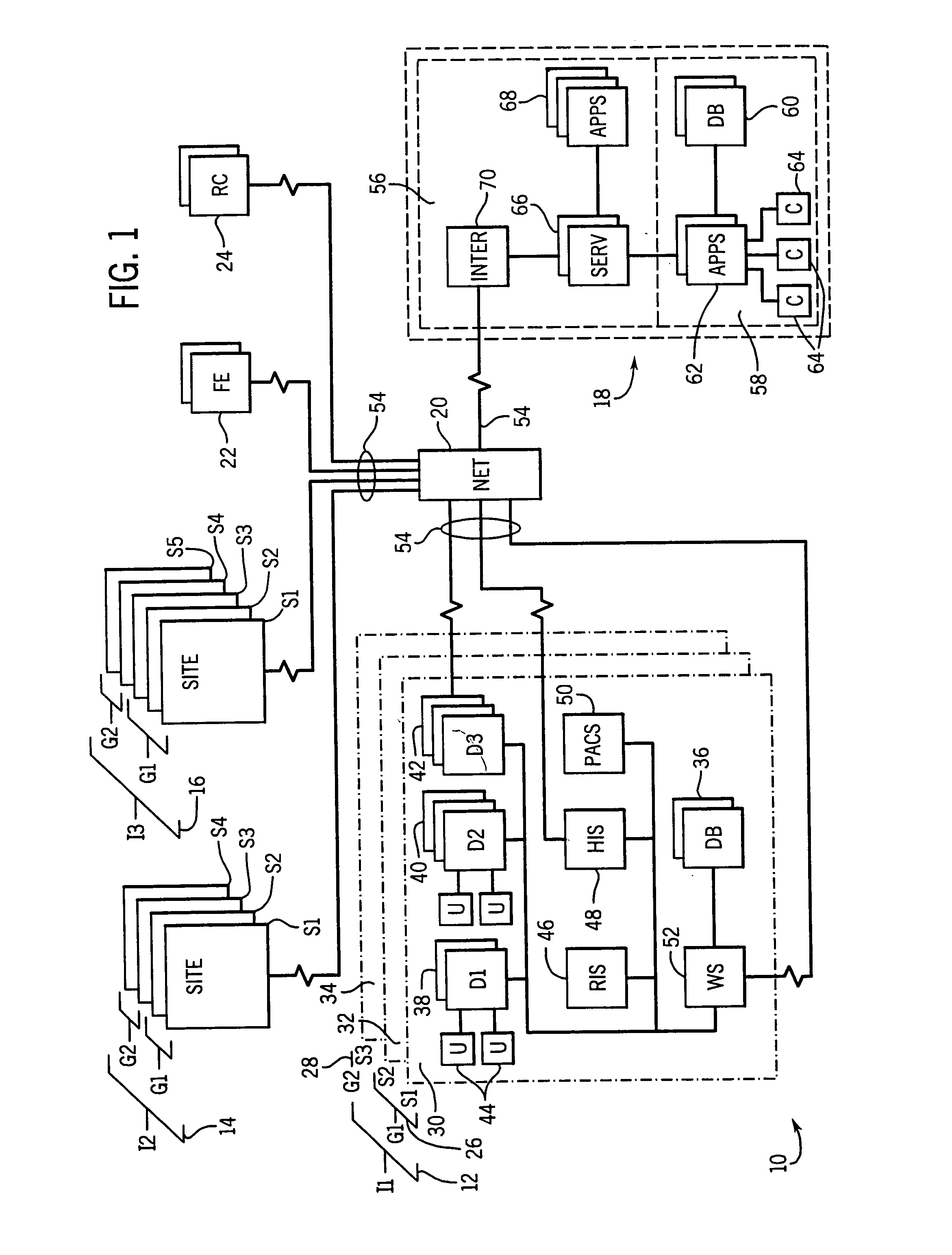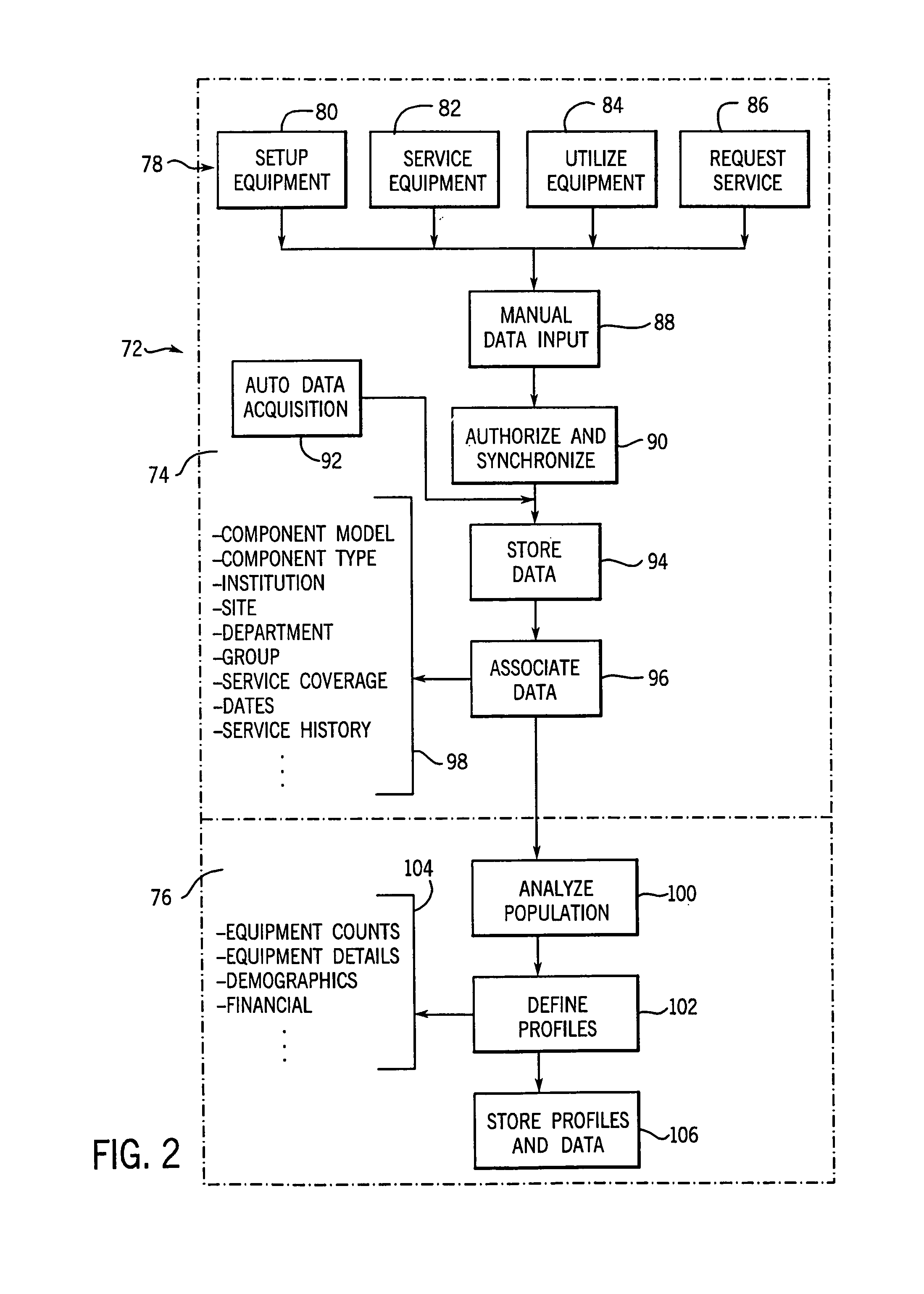Automatic identification of medical staff training needs
a technology for medical staff and needs, applied in the field of medical institutions and services, can solve the problems of increasing the knowledge and experience of facility personnel, affecting the quality of medical care, and unable to provide a complete and adequate basis for particular needs in training and utilization guides and materials, so as to achieve efficient and comprehensive effects
- Summary
- Abstract
- Description
- Claims
- Application Information
AI Technical Summary
Benefits of technology
Problems solved by technology
Method used
Image
Examples
Embodiment Construction
[0019]Turning up to the drawings, and referring first to FIG. 1, a service system 10 is represented for monitoring, data collection, data analysis, and reporting relating to biomedical equipment in one or more medical institutions. As illustrated, system 10 includes a plurality of institutions 12, 14 and 16, details of which are represented only for the first institution 12. In accordance with aspects of the present technique, any number of institutions may be serviced by a topography such as that illustrated in FIG. 1, or various modified topographies employing the techniques described below. System 10 further includes at least one service provider 18 which services the biomedical equipment of the institutions, collects and analyzes data on the equipment, and provides reports relating to the equipment inventory, performance, and so forth. In the illustrated embodiment, the institutions and the service provider may be linked via a network 20, such as the Internet. In a general imple...
PUM
 Login to View More
Login to View More Abstract
Description
Claims
Application Information
 Login to View More
Login to View More - R&D
- Intellectual Property
- Life Sciences
- Materials
- Tech Scout
- Unparalleled Data Quality
- Higher Quality Content
- 60% Fewer Hallucinations
Browse by: Latest US Patents, China's latest patents, Technical Efficacy Thesaurus, Application Domain, Technology Topic, Popular Technical Reports.
© 2025 PatSnap. All rights reserved.Legal|Privacy policy|Modern Slavery Act Transparency Statement|Sitemap|About US| Contact US: help@patsnap.com



